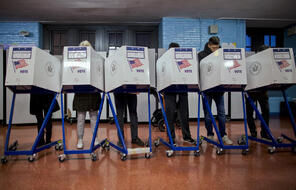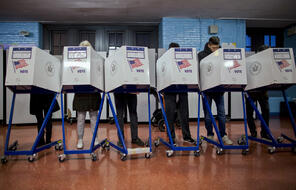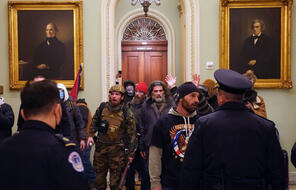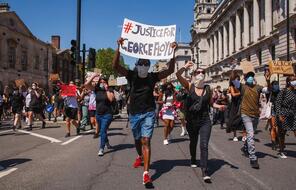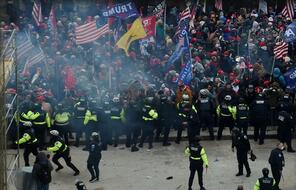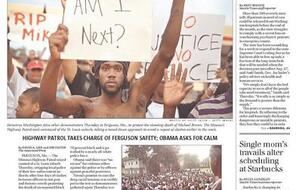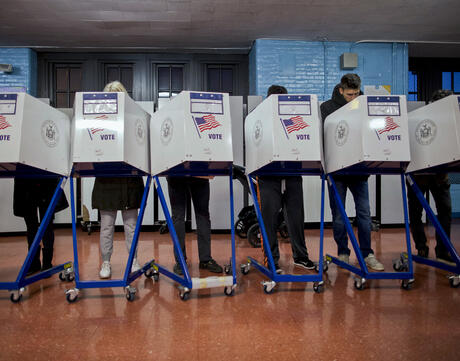
Voting Rights in the United States
At a Glance
Language
English — USSubject
- Civics & Citizenship
- History
- Social Studies
Grade
6–12- Democracy & Civic Engagement
- Racism
Overview
About This Mini-Lesson
Elections are crucial to democracy, ensuring that people have a voice in their government. Throughout US history, different groups of Americans have fought for the right to vote, both because this right is crucial for participating in democracy and because the right to vote is symbolic of the right to belong in the nation.
Since the 2020 election, 17 states have enacted legislation that makes it easier to vote, such as legislation that registers voters automatically and expands access to early or absentee voting. Other states have moved in the opposite direction, passing laws that create barriers to voting. These laws include requiring people to present IDs to vote, disenfranchising people who were previously convicted of felonies, restricting early and absentee voting, and removing voters’ names from registration lists if they have not recently voted. The Supreme Court’s 2013 decision in Shelby County v. Holder to strike down portions of the 1965 Voting Rights Act has made it easier for states to enact new restrictions on voting, and many of these new restrictions are being challenged in the courts, with critics arguing that they disproportionately affect voters who are racial minorities, poor, or young.
In Part 1 of this mini-lesson, students reflect on how voting laws in different states impact voters today. In Part 2, students learn about the history of voting rights and the impact of the Supreme Court’s 2013 decision in Shelby County v. Holder. You can use the entire mini-lesson or a selection of activities from one or both parts.
Preparing to Teach
A Note to Teachers
Before you teach this mini-lesson, please review the following guidance to tailor this lesson to your students’ contexts and needs.
Activities
Part 1: What Is the State of Voting Rights Today?
Part 2: How Did We Get Here?
Extension Activities
Materials and Downloads
Resources from Other Organizations
Unlimited Access to Learning. More Added Every Month.
Facing History & Ourselves is designed for educators who want to help students explore identity, think critically, grow emotionally, act ethically, and participate in civic life. It’s hard work, so we’ve developed some go-to professional learning opportunities to help you along the way.
Exploring ELA Text Selection with Julia Torres
On-Demand

Working for Justice, Equity and Civic Agency in Our Schools: A Conversation with Clint Smith
On-Demand

Centering Student Voices to Build Community and Agency
On-Demand


